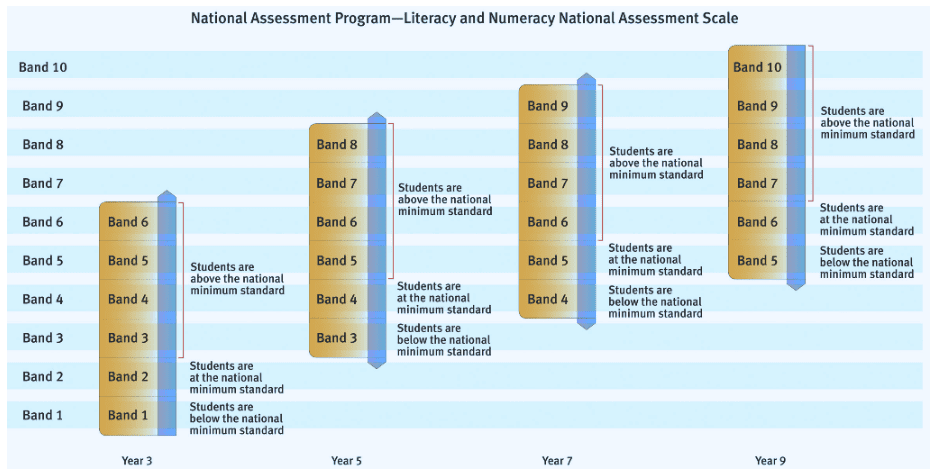Understanding NAPLAN: A Guide for Parents
NAPLAN is an important part of Australia’s education system, helping schools, teachers, and parents understand how students are progressing in literacy and numeracy. While some parents may feel uncertain about its purpose and impact, this guide to understanding NAPLAN provides clear answers to common questions about it, and what it means for your child.
Understanding NAPLAN – What is it?
The National Assessment Program – Literacy and Numeracy (NAPLAN) is an annual test for students in Years 3, 5, 7, and 9 across Australia. It assesses essential skills in reading, writing, spelling, grammar, punctuation, and numeracy to provide a snapshot of student progress, measuring whether students are developing the skills they need to succeed in school and life.
The administration and oversight of NAPLAN fall under the responsibility of the Australian Curriculum, Assessment and Reporting Authority (ACARA). This organisation is tasked with designing the tests, ensuring they are effectively implemented, and reporting on student performance nationwide. It’s the same organisation that makes the Australian curriculum! They’re an independent statutory authority that works under the Department of Education.
What is the purpose of NAPLAN?
NAPLAN helps the Australian Government, education authorities, and schools assess whether young Australians are meeting key literacy and numeracy milestones. By analysing student performance data, education systems can evaluate the effectiveness of current programs, identify areas requiring improvement, and determine which schools may need additional support in teaching and learning. This information is essential for shaping policies and strategies that enhance student learning outcomes across the country.

What is Assessed in NAPLAN?
Writing
Students compose either a narrative or persuasive piece in response to a given prompt.
Duration: 40 minutes (Year 3), 42 minutes (Years 5, 7, and 9).
Reading
Students respond to questions based on imaginative, persuasive, and informative texts.
Duration: 45 minutes (Year 3), 50 minutes (Year 5), 65 minutes (Years 7 and 9).
Conventions of Language
Students complete questions on spelling, grammar, and punctuation.
Duration: 45 minutes for all year levels.
Numeracy
Students are tested on number and algebra, measurement and geometry, and statistics and probability.
Duration: 45 minutes (Year 3), 50 minutes (Year 5), 65 minutes (Years 7 and 9).
Students in different year levels sit examinations tailored to their appropriate level of difficulty. NAPLAN test questions may require multiple-choice answers, short written responses, or other fixed responses supported by technology. The only NAPLAN test that includes an extended response is the writing assessment.
What do the NAPLAN results mean for my child?
Students receive individual scores for each NAPLAN test – Reading, Writing, Conventions of Language, and Numeracy. In addition to their raw scores, their performance is displayed on a band scale, where higher bands indicate stronger performance.
These band scales are designed to ensure that the same score reflects the same level of achievement over time. For example, if a student scores 700 in Reading in both Years 3 and 5, it indicates consistent performance – there was no improvement and there was no decline in performance. However, if their score increases from 700 in Year 3 to 900 in Year 5, it demonstrates improvement.
ACARA also sets a ‘national minimum standard’ on the band scale, representing the basic skills expected at each year level.
You can see what these bands look like below.

Is NAPLAN compulsory?
While NAPLAN is part of the national education system, participation is not legally required. However, it is strongly encouraged to help schools and education systems track student learning outcomes effectively.
What happens if you fail NAPLAN?
There is no pass or fail in NAPLAN. Instead, student performance is measured against proficiency standards. If a child scores below the expected level, teachers and schools can use the results to provide additional support and resources to help bridge learning gaps.
What happens if you skip NAPLAN?
If a student does not sit NAPLAN, they will not receive an individual assessment report. This may mean missing out on valuable feedback that could assist their learning journey. However, non-participation does not impact a student’s academic progression.
Can my child be exempt from NAPLAN?
Exemptions may be granted in specific cases, such as for students with significant disabilities or for those with limited English proficiency who have recently arrived in Australia. Parents must apply for an exemption through their school principal, and exemptions are granted on a case-by-case basis.
Does NAPLAN really matter?
While NAPLAN provides useful information, it is only one measure of student achievement. Schools use a range of assessments to evaluate progress, and NAPLAN results do not determine a student’s future success. The most important aspect is that students engage with the process in a positive way, using it as an opportunity to demonstrate their learning.
At Good Shepherd Lutheran School, we recognise the value of NAPLAN as a tool for assessing academic progress, but we also understand that true success extends far beyond test scores. While we are proud of our students’ academic achievements, we believe in nurturing the whole child, focusing on their wellbeing, emotional growth, and character development. We are committed to providing a supportive learning environment where each child is encouraged to explore their unique talents, build resilience, and develop a lifelong love of learning. Our holistic approach ensures that every student is well-prepared not just for academic success, but for a fulfilling and balanced life.
Resources for Parents
For more detailed information and resources about NAPLAN, please review the following:
- Department of Education: NAPLAN information for parents, carers and the community
- NAP (National Assessment Program): NAP Website
